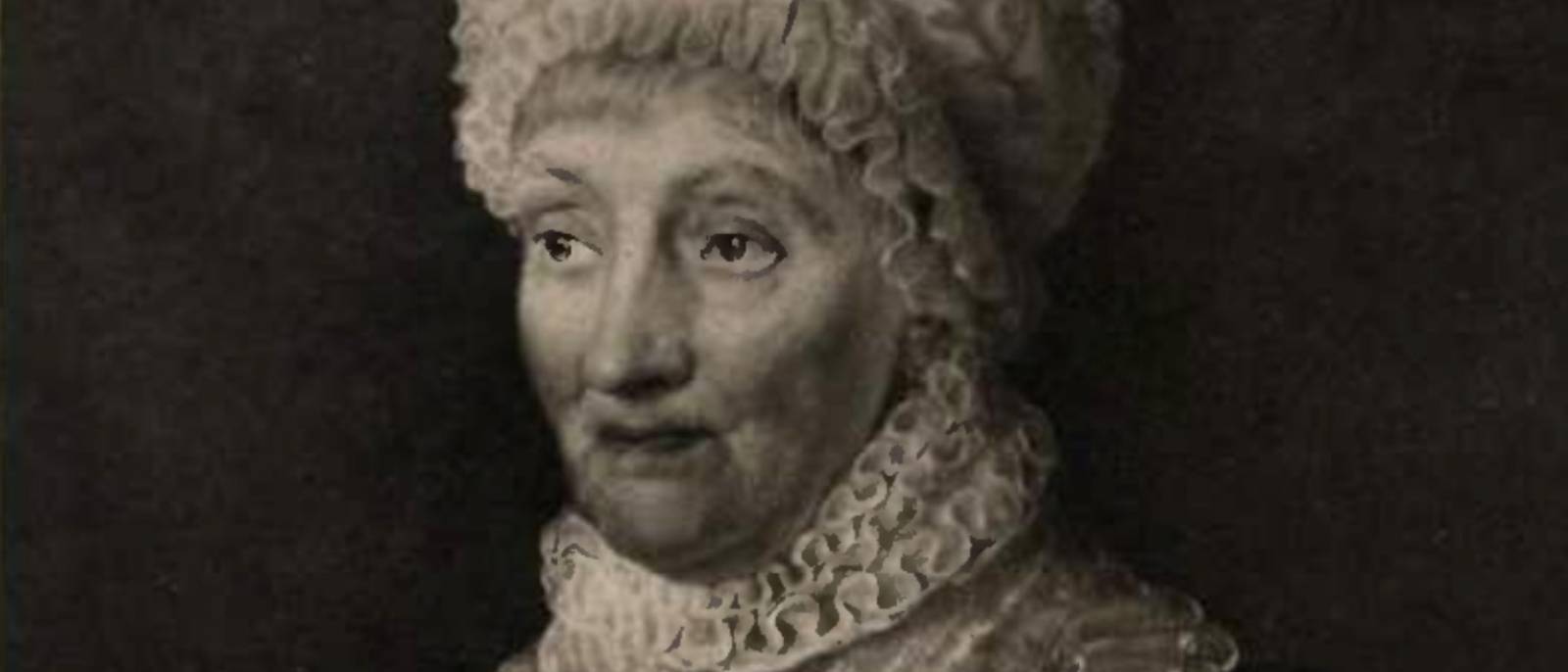Caroline Herschel: Beyond Feminism and Toward the Stars
The otherworldly story of the world’s first female astronomer.
Over the course of her long life, Caroline Herschel (1750-1848) discovered eight comets. Of these, six still bear her name. She was the first woman to make the stars her profession. In 1835, at 85 years of age, Herschel —born in Hannover, Germany, and later based in Britain— was recognized as the first female astronomer and named an honorary member of England’s Royal Astronomical Society.
A German of singular destiny, she exceeded the life expectancy of her time by decades, witnessed the French Revolution, and the rise and fall of Napoleon Bonaparte. She lived to see the emergences of the telegraph and the steam locomotive. Her early childhood, hardly free from calamity, saw four of her ten siblings die, and at eleven she suffered from typhoid fever which nearly cost her life, damaged her left eye forever, and affected her growth.
Herschel’s mother then tried to keep her from studying. Her place, according to her, was in doing household chores. It was her father who taught her science and music. He showed her the constellations and assigned her to young tutor in Hanover. After her father died, Herschel traveled to Bath, in England, where her brother William was an organist at the local church. There, she learned to sing, growing into a talented vocalist able to accompany him during church services. When the chance for a singing career away from her brother came up, she refused saying she’d never do it without him.
Over time, William developed a love for stars and astronomy, and began to build his own telescopes for the lack of the money to purchase one. Herschel then became the assistant to his observations of the cosmos, first reading aloud to him as he built his instruments and, little by little, integrating herself into the more technical tasks, taking measurements and recording his observations.

Knowing her brother’s records rather well, Herschel noticed errors in some mappings he’d made of the universe and in others as well. Thus, she began making her own observations and calculations. In the summer of 1872, at 32 years old, Herschel made her own catalog of stars. Soon after, she made her first discovery: a nebula yet unregistered in the then canonical Messier Catalogue.
Curiously, today an elliptical galaxy, a companion to Andromeda, discovered by Herschel is known as Messier 110. Unfortunately, even in our own time, it’s no surprise that, as was the case of many scientific women of the past, Herschel’s name doesn’t enjoy the fame she deserves nor that enjoyed by her male counterparts. A tiny woman (she measured 1.30 meters and could see well with but one eye), she was able to explore the immensity of the universe, to collect stars, and she changed history, paving the way for many scientists and for many women who followed her.
Images: 1) Public domain 2) Wellcome Collection
Related Articles
Why shrinking the size of life is synonymous of well-being
One of the great misunderstandings regarding modern spirituality is that to achieve it requires many things: readings, food, exercise, travel, groups and techniques. But perhaps it should be suggested
What is energy medicine yoga?
Energy Medicine Yoga (EMYoga) is slightly different from other types of Yoga, but it provides the same benefits in addition to a few very specific ones. One of them is that it gives you much more in
Red tea, the best antioxidant beverage on earth
Red tea is considered to be the most unusual of teas because it implies a consistently different preparation process. ––It is believed that its finding came upon surprisingly when traditional green
Is the internet on the verge of self-awareness?
More than 50 years ago, Marshall McLuhan described technology as an extension of our brains, constantly mutating and branching out. “These new media have made our world into a single unit,” the
How art can help us to age, healthy
Perhaps many of us already well know the formula for aging in health and wellness. A balanced diet and, as much as possible, one that’s natural. Keep our brains active and stimulated. Preserve and
Earthanima: documenting the living language of nature
The basic intuition that the Earth is alive and that nature has a language through which it communicates with us is what prompted this wood-art project named Earthanima. For the past couple of years
Dialogue with the Dalai Lama on science and spirituality
The Dalai Lama has been interested in science since he was a child. Over the years he’s visited many laboratories and has attended conferences that discuss consciousness from the scientific point of
Brian Eno's literary recommendations to rebuild society
Artists and authors often get asked what books or records they’d take with them to a deserted island. On principle, this is naturally an extreme anthology: urgency and tragedy guide its selection. It
Bill Mollison, natural ideologue and father of permaculture
Permaculture has established itself as a path towards communitarianism, but one that is in full symbiosis with nature. In practice, it is more than just a combination of agriculture, horticulture
A New Year's resolution for the earth
Worrisome quantities of waste are generated by human populations. Especially in cities, these have reached unprecedented and alarming levels. A largely uncontrolled practice, it affects everything on










